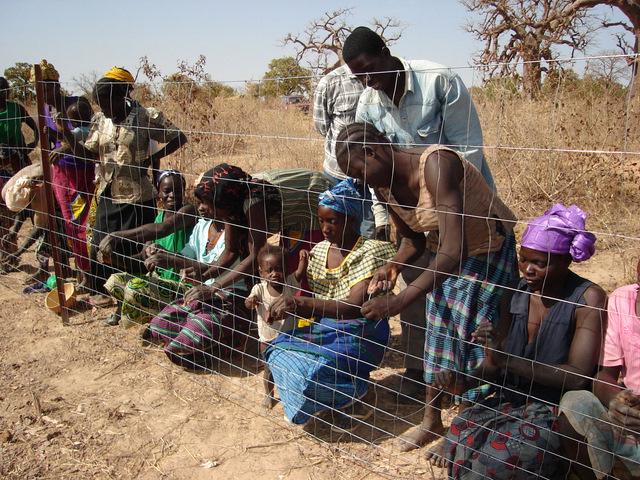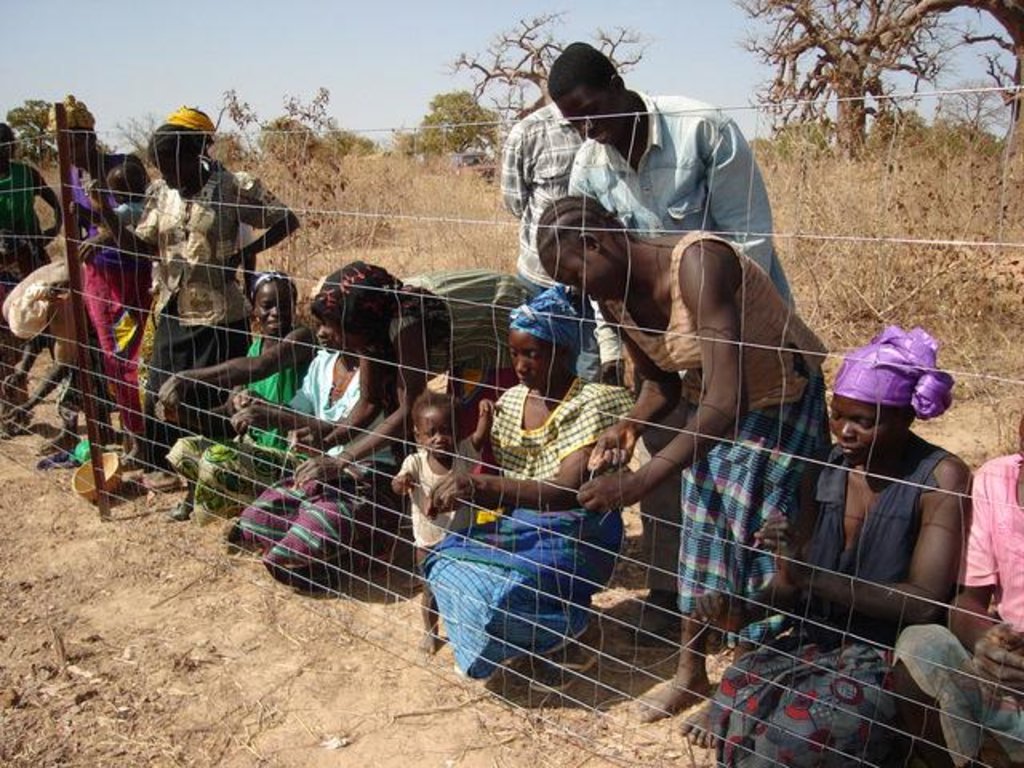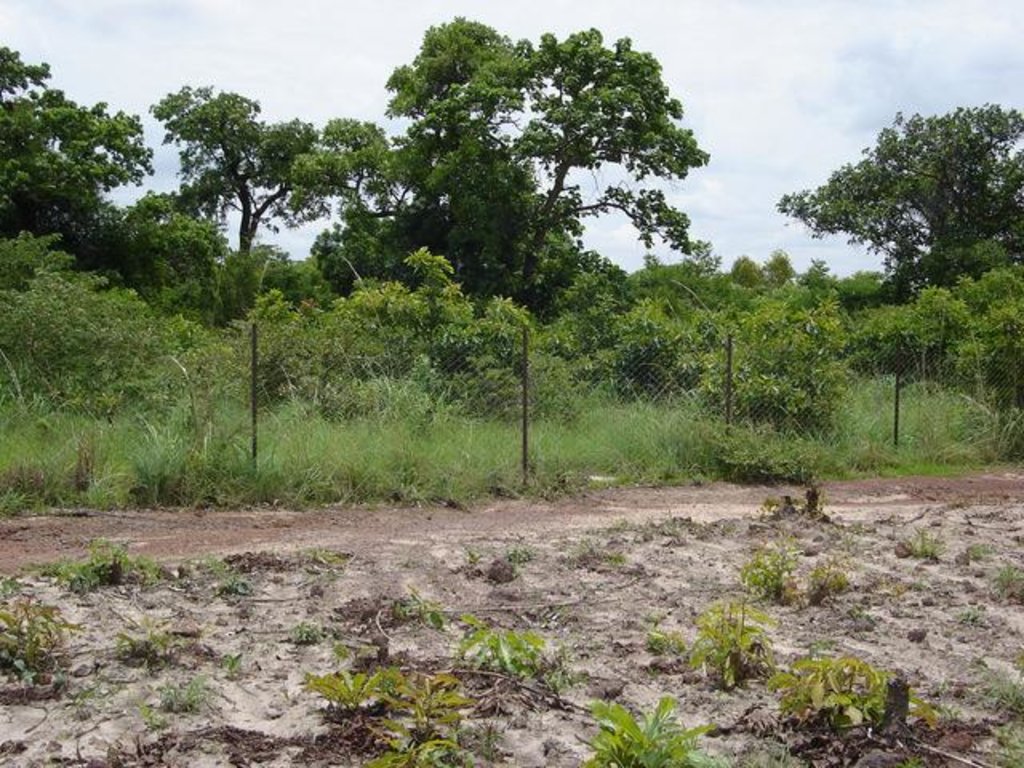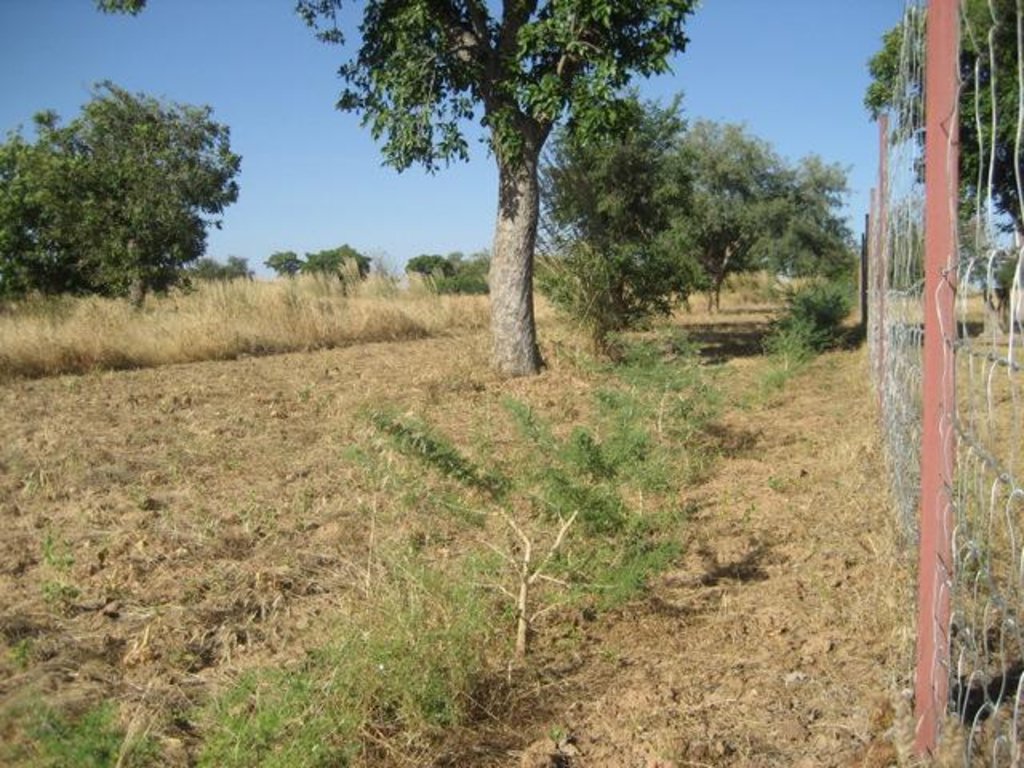Assisted Natural Regeneration of Degraded Land [Burkina Faso]
- Creation:
- Update:
- Compiler: Franziska Kaguembèga-Müller
- Editor: –
- Reviewers: Fabian Ottiger, Alexandra Gavilano
technologies_1358 - Burkina Faso
View sections
Expand all Collapse all1. General information
1.2 Contact details of resource persons and institutions involved in the assessment and documentation of the Technology
Key resource person(s)
SLM specialist:
Name of project which facilitated the documentation/ evaluation of the Technology (if relevant)
Book project: SLM in Practice - Guidelines and Best Practices for Sub-Saharan Africa (SLM in Practice) {'additional_translations': {}, 'value': 517, 'label': 'Name of the institution(s) which facilitated the documentation/ evaluation of the Technology (if relevant)', 'text': 'newTree - nouvelarbre (newTree - nouvelarbre) - Switzerland', 'template': 'raw'}1.3 Conditions regarding the use of data documented through WOCAT
The compiler and key resource person(s) accept the conditions regarding the use of data documented through WOCAT:
Yes
2. Description of the SLM Technology
2.1 Short description of the Technology
Definition of the Technology:
Fenced 3 ha plots are set aside to allow for natural regeneration of highly diverse forests.
2.2 Detailed description of the Technology
Description:
Assisted natural regeneration, as promoted by newTree in Burkina Faso, starts with enclosing 3 ha of degraded land with a solid fence. Fence materials (iron posts and galvanic wire) are externally sponsored and locally assembled and installed. Along the fence a dense living hedge of thorny trees (local tree species: e.g. Acacia nilotica, A. senegal, Prosopis sp, Ziziphus mauritiana) is planted. A strip of 10 m along the hedge is dedicated to agriculture. This area is equivalent to approximately 10% of the protected area. The rest is dedicated to natural regeneration of the local forest. Once protected, natural vegetation rich in endogenous species can actively regenerate. Annual vegetation species inventories are made to monitor the biomass, biodiversity and the growth rate of the trees. The forest reaches a tree density of approximately 500 trees per hectare and consists of around 120 local species. Some enrichment planting of rare species enhances the allotments. The protected area is of paramount importance for biodiversity conservation. Management activities in the protected area includes (1) seeding / planting of improved fodder species; and (2) establishing stone lines and half-moons (demi-lunes) for soil erosion control and water harvesting, (3) installing bee hives for honey production; and (4) fodder production: the grass is cut, tied and carried to feed livestock outside the regeneration area. Property rights for the protected area are clearly established through a contractual agreement that includes/respects traditional and government land rights. The local land users select the area, provide all labour inputs and ensure the long-term management of the sites according to mutually agreed goals. Training is provided to enhance income generating activities – ranging from beekeeping and the production of high-value vegetable crops to the processing of non timber forestry products – and to promote the use of fuel-efficient cooking stoves.
2.3 Photos of the Technology
2.5 Country/ region/ locations where the Technology has been applied and which are covered by this assessment
Country:
Burkina Faso
Region/ State/ Province:
Soum Province
2.6 Date of implementation
If precise year is not known, indicate approximate date:
- less than 10 years ago (recently)
2.7 Introduction of the Technology
Specify how the Technology was introduced:
- through projects/ external interventions
3. Classification of the SLM Technology
3.1 Main purpose(s) of the Technology
- reduce, prevent, restore land degradation
- conserve ecosystem
- preserve/ improve biodiversity
3.2 Current land use type(s) where the Technology is applied
Land use mixed within the same land unit:
Yes
Specify mixed land use (crops/ grazing/ trees):
- Agroforestry

Cropland
- Annual cropping

Forest/ woodlands
- Assisted regeneration of natural forest
Type of tree:
- Acacia nilotica
- Acacia senegal
- Ziziphus mauritiana
Products and services:
- Timber
- Fuelwood
- Fruits and nuts
- Other forest products
- Grazing/ browsing
- Nature conservation/ protection
Comments:
Major land use problems (land users’ perception): Soil erosion by water and wind; Fertility decline; Sealing and crusting; Reduction of vegetation cover; Aridification
Plantation forestry: Yes
Future (final) land use (after implementation of SLM Technology): Forests / woodlands: Fn: Natural
3.3 Has land use changed due to the implementation of the Technology?
Has land use changed due to the implementation of the Technology?
- Yes (Please fill out the questions below with regard to the land use before implementation of the Technology)
Land use mixed within the same land unit:
Yes
Specify mixed land use (crops/ grazing/ trees):
- Agro-silvopastoralism

Cropland

Grazing land

Forest/ woodlands
3.4 Water supply
Water supply for the land on which the Technology is applied:
- rainfed
3.5 SLM group to which the Technology belongs
- area closure (stop use, support restoration)
3.6 SLM measures comprising the Technology

vegetative measures
- V1: Tree and shrub cover

management measures
- M1: Change of land use type
Comments:
Main measures: vegetative measures, management measures
Type of vegetative measures: in blocks
3.7 Main types of land degradation addressed by the Technology

soil erosion by water
- Wt: loss of topsoil/ surface erosion

soil erosion by wind
- Et: loss of topsoil

chemical soil deterioration
- Cn: fertility decline and reduced organic matter content (not caused by erosion)

physical soil deterioration
- Pk: slaking and crusting

biological degradation
- Bc: reduction of vegetation cover
- Bq: quantity/ biomass decline
- Bs: quality and species composition/ diversity decline

water degradation
- Ha: aridification
Comments:
Main type of degradation addressed: Wt: loss of topsoil / surface erosion, Et: loss of topsoil, Cn: fertility decline and reduced organic matter content, Pk: sealing and crusting, Bc: reduction of vegetation cover, Bq: quantity / biomass decline, Bs: quality and species composition /diversity decline, Ha: aridification
Main causes of degradation: deforestation / removal of natural vegetation (incl. forest fires), overgrazing
3.8 Prevention, reduction, or restoration of land degradation
Specify the goal of the Technology with regard to land degradation:
- restore/ rehabilitate severely degraded land
4. Technical specifications, implementation activities, inputs, and costs
4.1 Technical drawing of the Technology
Technical specifications (related to technical drawing):
Technical knowledge required for field staff / advisors: moderate
Technical knowledge required for land users: moderate
Main technical functions: control of raindrop splash, improvement of ground cover, improvement of surface structure (crusting, sealing), increase in organic matter, increase in nutrient availability (supply, recycling,…), increase of infiltration, reduction in wind speed, increase of biomass (quantity), promotion of vegetation species and varieties (quality, eg palatable fodder), spatial arrangement and diversification of land use
Secondary technical functions: increase of groundwater level / recharge of groundwater
Scattered / dispersed
Vegetative material: T : trees / shrubs
In blocks
Vegetative material: T : trees / shrubs
Number of plants per (ha): 500
Trees/ shrubs species: Acacia nilotica, A. senegal, Prosopis sp, Ziziphus mauritiana
Author:
Franziska Kaguembèga-Müller
4.3 Establishment activities
| Activity | Timing (season) | |
|---|---|---|
| 1. | Select an area of 3 ha of degraded land | |
| 2. | Establish a 1.5 m high fence around the selected area: install metal posts, manufacture / assemble chain-link fence materials (manually) | |
| 3. | Plant a living hedge of spiny trees at a distance of 1 m to the fence, plants spaced at 0.4 m | |
| 4. | Reserve a 10 m strip along the fence / hedge for improved agriculture / Plant a living hedge of Jatropha curcas to separate cropland from regeneration area | |
| 5. | Seed / plant improved fodder species within protected area / Establish stone lines and half-moons for soil erosion control and water harvesting within protected area | |
| 6. | Install beehives (2-10 hives per protected area) | |
| 7. | Purchase protection and harvesting equipment | |
| 8. | Construct fuel efficient cooking stoves |
4.4 Costs and inputs needed for establishment
| Specify input | Unit | Quantity | Costs per Unit | Total costs per input | % of costs borne by land users | |
|---|---|---|---|---|---|---|
| Labour | Labour | ha | 1.0 | 1300.0 | 1300.0 | 33.0 |
| Equipment | Tools | ha | 1.0 | 100.0 | 100.0 | 33.0 |
| Construction material | Material for fence construction | ha | 1.0 | 2900.0 | 2900.0 | 33.0 |
| Other | Training, seeds, compost | ha | 1.0 | 260.0 | 260.0 | 33.0 |
| Total costs for establishment of the Technology | 4560.0 | |||||
| Total costs for establishment of the Technology in USD | 4560.0 | |||||
Comments:
Components for fence construction: sand, gravel, rock and water, poles, galvanised wire, cement, tree seedlings
4.5 Maintenance/ recurrent activities
| Activity | Timing/ frequency | |
|---|---|---|
| 1. | Supervise fence and protected area; repairing where necessary | |
| 2. | Replant / replace dead seedlings in living hedges | |
| 3. | Improved agriculture: agroforestry, water harvesting, compost application | |
| 4. | Beekeeping: monthly control of beehive; yield 2-3 times per year (manually with protection equipment) | |
| 5. | Improved fodder production: cut grass and tie hay with simple tying machine (once a year after rainy season) |
4.6 Costs and inputs needed for maintenance/ recurrent activities (per year)
| Specify input | Unit | Quantity | Costs per Unit | Total costs per input | % of costs borne by land users | |
|---|---|---|---|---|---|---|
| Labour | Labour | ha | 1.0 | 730.0 | 730.0 | 95.0 |
| Plant material | Seedlings | ha | 1.0 | 40.0 | 40.0 | 95.0 |
| Other | Training, seeds, compost | ha | 1.0 | 40.0 | 40.0 | 95.0 |
| Total costs for maintenance of the Technology | 810.0 | |||||
| Total costs for maintenance of the Technology in USD | 810.0 | |||||
Comments:
Machinery/ tools: pick, shovel, hammer, glove, tong, iron rod
A unit relates to a protected area of 3 hectares (average size; feasible and beneficial for participating land users, namely farm families / womens’ groups).
4.7 Most important factors affecting the costs
Describe the most determinate factors affecting the costs:
Labour for establishment includes: digging of planting pits/ditches, post installation, fabrication of chain-link fence materials, all plantations, stone lines, half-moons, etc. Components for fence construction are locally available.
5. Natural and human environment
5.1 Climate
Annual rainfall
- < 250 mm
- 251-500 mm
- 501-750 mm
- 751-1,000 mm
- 1,001-1,500 mm
- 1,501-2,000 mm
- 2,001-3,000 mm
- 3,001-4,000 mm
- > 4,000 mm
Specifications/ comments on rainfall:
300-600 mm
Agro-climatic zone
- semi-arid
Thermal climate class: tropics
5.2 Topography
Slopes on average:
- flat (0-2%)
- gentle (3-5%)
- moderate (6-10%)
- rolling (11-15%)
- hilly (16-30%)
- steep (31-60%)
- very steep (>60%)
Landforms:
- plateau/plains
- ridges
- mountain slopes
- hill slopes
- footslopes
- valley floors
Altitudinal zone:
- 0-100 m a.s.l.
- 101-500 m a.s.l.
- 501-1,000 m a.s.l.
- 1,001-1,500 m a.s.l.
- 1,501-2,000 m a.s.l.
- 2,001-2,500 m a.s.l.
- 2,501-3,000 m a.s.l.
- 3,001-4,000 m a.s.l.
- > 4,000 m a.s.l.
5.3 Soils
Soil depth on average:
- very shallow (0-20 cm)
- shallow (21-50 cm)
- moderately deep (51-80 cm)
- deep (81-120 cm)
- very deep (> 120 cm)
Soil texture (topsoil):
- fine/ heavy (clay)
Topsoil organic matter:
- low (<1%)
If available, attach full soil description or specify the available information, e.g. soil type, soil PH/ acidity, Cation Exchange Capacity, nitrogen, salinity etc.
Soil fertility: Low
Soil drainage/infiltration: Poor
5.6 Characteristics of land users applying the Technology
Market orientation of production system:
- subsistence (self-supply)
- mixed (subsistence/ commercial)
Individuals or groups:
- groups/ community
Level of mechanization:
- manual work
Indicate other relevant characteristics of the land users:
Land users applying the Technology are mainly disadvantaged land users
Difference in the involvement of women and men: some of the plots are managed by women's groups
Population density: 10-50 persons/km2
5.7 Average area of land used by land users applying the Technology
- < 0.5 ha
- 0.5-1 ha
- 1-2 ha
- 2-5 ha
- 5-15 ha
- 15-50 ha
- 50-100 ha
- 100-500 ha
- 500-1,000 ha
- 1,000-10,000 ha
- > 10,000 ha
Is this considered small-, medium- or large-scale (referring to local context)?
- small-scale
Comments:
3 ha per household
5.8 Land ownership, land use rights, and water use rights
Land ownership:
- state
Land use rights:
- individual
Comments:
traditional family property rights (factually)
land use rights: families
6. Impacts and concluding statements
6.1 On-site impacts the Technology has shown
Socio-economic impacts
Production
crop production
fodder production
fodder quality
wood production
Income and costs
farm income
Socio-cultural impacts
food security/ self-sufficiency
health situation
SLM/ land degradation knowledge
situation of socially and economically disadvantaged groups
Ecological impacts
Water cycle/ runoff
harvesting/ collection of water
surface runoff
evaporation
Soil
soil moisture
soil cover
soil loss
soil compaction
nutrient cycling/ recharge
soil organic matter/ below ground C
Biodiversity: vegetation, animals
biomass/ above ground C
plant diversity
beneficial species
habitat diversity
Climate and disaster risk reduction
wind velocity
6.3 Exposure and sensitivity of the Technology to gradual climate change and climate-related extremes/ disasters (as perceived by land users)
Gradual climate change
Gradual climate change
| Season | increase or decrease | How does the Technology cope with it? | |
|---|---|---|---|
| annual temperature | increase | well |
Climate-related extremes (disasters)
Meteorological disasters
| How does the Technology cope with it? | |
|---|---|
| local rainstorm | well |
| local windstorm | well |
Climatological disasters
| How does the Technology cope with it? | |
|---|---|
| drought | well |
Hydrological disasters
| How does the Technology cope with it? | |
|---|---|
| general (river) flood | well |
Other climate-related consequences
Other climate-related consequences
| How does the Technology cope with it? | |
|---|---|
| reduced growing period | well |
6.4 Cost-benefit analysis
How do the benefits compare with the establishment costs (from land users’ perspective)?
Short-term returns:
neutral/ balanced
Long-term returns:
very positive
How do the benefits compare with the maintenance/ recurrent costs (from land users' perspective)?
Short-term returns:
positive
Long-term returns:
very positive
6.5 Adoption of the Technology
Of all those who have adopted the Technology, how many did so spontaneously, i.e. without receiving any material incentives/ payments?
- 0-10%
Comments:
100% of land user families have adopted the Technology with external material support
There is a strong trend towards spontaneous adoption of the Technology
Comments on adoption trend: All land users have implemented the technology through receiving incentives (payment for labour and other inputs). Regeneration sites have been established in 5 different provinces (Soum in the North, Kadiogo, Kourweogo, Boulkiemde and Oubritenga in the centre of Burkina Faso). There is high demand for establishment of further sites. The demonstration effect of improved agriculture within the fence (agroforestry, etc. resulting in higher yields) encourages farmers to adopt these measures in their fields outside the protected area also.
6.8 Weaknesses/ disadvantages/ risks of the Technology and ways of overcoming them
| Weaknesses/ disadvantages/ risks in the compiler’s or other key resource person’s view | How can they be overcome? |
|---|---|
| High investment cost | introduce income generating activities which amortise (help pay off) the initial investments and the waiting time until land users can harvest non-woody products from the forest; relocate the fence to enclose other degraded land when the living hedge is dense enough and takes over the function of protection. |
| Insecurity of land rights is a constraint for implementation (government is official land owner) | Conclude contractual agreements which include/respect traditional and government land rights |
7. References and links
7.2 References to available publications
Title, author, year, ISBN:
Diatta, M; Albergel, J.; Perez, P.; Faye, E.; Séne, M. et Grouzis, M. 2000. Efficacité de la mise en défens testée dans l’aménagement d’un petit bassin versant de Thysse Kaymor (Sénégal). 15 p.
Title, author, year, ISBN:
Guinko S., 1984. Végétation de Haute Volta, Volume I. Thèse de Doctorat : Université de Bordeaux III (France). Tome, 394p.
Links and modules
Expand all Collapse allLinks
No links
Modules
No modules





